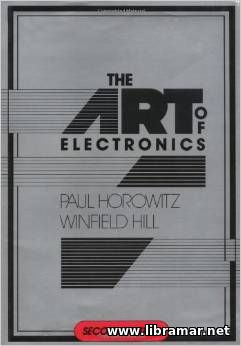 Here is the 2nd thoroughly updated edition of the world famous "The Art of Electronics" book, which has been revised in order to include all latest developments of the electronics world. The present publication is worldwide accepted as very successful reference book on the analog/digital electronic circuit design, in fact it revolutionized the whole process of teaching electronics by emphasizing the methods that are currently in use by circuit designers -- a combination of the basic laws and rules of thumb plus huge number of tricks.
The efforts of the authors resulted in largely nonmathematical treatment encouraging circuit intuition as well as brainstorming and simplified calculations of the electrical circuit performance and values. The publication is full of sharp insights and, at the same time, requires minimum knowledge of mathematics. The depth and richness of examples supplementing the theoretical material, is truly genuine.
We would recommend this book to any person involved in the experiments or researches in the field of electronics since it is delightful; note that all schematics are readable and the circuits do work. The publication features a tremendous diversity of invaluable technical info and will provide readers with an easy way to learn everything about the electronic design.
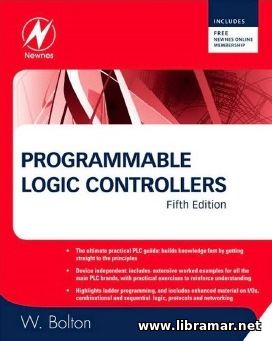 We are glad to introduce the fifth release of the Programmable Logic Controllers which continues to be very easy-to-use book, providing readers with the very basic principles of such controllers without tying to any particular manufacturer of PLC.
The present volume contains a truly extensive number of various examples and solved problems intended to assist in better and more thorough understanding of the theory provided, and utilizes various popular controllers, trying to highlight the fundamental knowledge to be used without having to address any of the PLC manufacturers. The publication is intended to help the readers to understand the basic principles of the design and internal architecture, principles of operation of the controllers and to identify the associated safety issues as well as fault diagnostics methods, ways of proper testing and debugging.
Numerous case studies have been included in this edition of the book to supplement the theory; the title also features the extended coverage of the sequences, and much more details have been provided there relating to the programming using the sequential function charts, testing inputs and outputs, comparison of various relay-controlled systems etc.; the IEC programming standard has also been touched in this publication together with the programming devices, security issues etc.
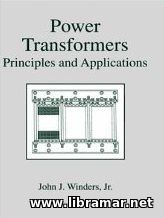 The present publication was written by John Winders on the basis of the training materials of the Transformer Applications course. It aims to cover the most relevant and important topics, like basic theory of the transformers, two-winding transformer connections, transformer impedance/losses and three-winding transformers, automatic transformers, short circuits, inrush currents, auxiliary electrical equipment, reading and applying name plate data, and, finally, maintenance, troubleshooting and testing, as well as their reliability.
The theoretical materials that are provided by the author are supplemented with lots of equations, data tables and illustration for their easier understanding. The author has covered the underlying theory of the power transformers and also touched the issues relating to the application of this theoretical knowledge to the design process of the transformers. This handbook would also be very helpful when used as a sort of practical reference for the industrial power engineers.
In addition to all the summaries provided in each of the chapters, the main body of the publication gives a truly excellent descriptions of the various auxiliary electrical equipment and systems. In short, the book gives the info on how to read and interpret, and subsequently apply the data on the transformer's nameplate...
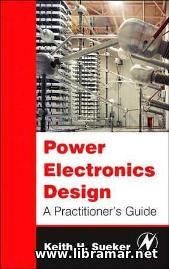 Another Newnes electrical engineering publication is intended to serve as a perfect reference which would cover the different important aspects of application of high power semi-conductor technology to various power conversion equipment, large motor drives, utility auxiliaries, power supplies and many other applications.
The book covers such areas as electrical power and various power apparatus, feedback control systems, phase control, pulsed converters, rectifiers, switch mode systems, converter equations, rotating machines, different thermal considerations, etc. It includes more than two hundred of illustrations, many examples and features a very down-to-earth approach without any isoteric information and too complex jargon. the readers will be provided with the valuable cautionary advice basing on the examples of costly design goofs.
The author of the book did a really remarkable job making the complex power electronics design transparent and easy-to-understand for the readers, thanks to the direct and very simple language used in his explanations and also owing to the minimum reliance on the math. Would say this is the recommended reading for any person making the practical steps in the field of power systems design.
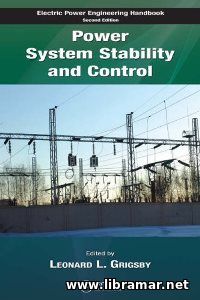 Here is another part of The Electric Power Engineering Handbook prepared by Leonard Grigsby. The author offers the readers detailed and duly focused technical information which covers virtually all aspects relating to the protection, stability, control and operation of the electrical power systems.
The material that has been chose by the author for inclusion in this volume has been compiled using the contributions by the recognized industry specialists under the direct technical guidance provided by accomplished authority in the field of electrical power engineering. Indeed, nearly every part of the publication has been significantly updated to keep pace with all recent technological developments in power systems of today, reflecting all changes and updates made to the relevant national/international industry standards and recommended practices.
There are some completely new chapters that have been added by the author on the power system oscillations, stability controls, dynamic modeling etc - all mentioned changes were made with the intention to keep the publication relevant in the fast evolving field. As a result, we are quite sure that this book will help you ensure safest, most efficient and best-quality power delivery, and may recommend it for use by both students and industry professionals to get to the desired level of technical knowledge.
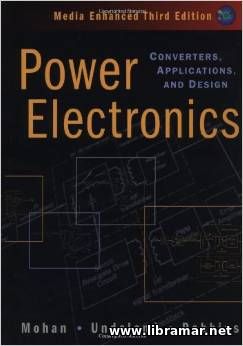 The book presents a truly great survey of power electronics conducted by the authors, Ned Mohan, Tore Undeland, and William Robbins, and will be very useful for everyone with some basic electrical engineering background. It offers readers the in-depth coverage of the topics and provides a nice presentation of the fundamentals of power electronics for design and application of the equipment starting from the 500 kW.
The main body of the book describes the power electronic converters that have been made feasible by the latest generation of semiconductor-based devices. The terminology, hardware, as well as electric circuits and analysis have been presented in a very approachable way. After reading this book, you will have a very clear sense of the converters, the devices available today, and the appropriate technological advances.
Though the team of authors managed to cover a lot of material relating to the power electronics, they did not go too much into detail so the book is easy and interesting to read. The breakdown of the topics and explanation of the material is excellent. we would name this book the best power electronics publication in terms of fundamentals. It will give readers as much as they need to gain some knowledge on the design and application of the converters...
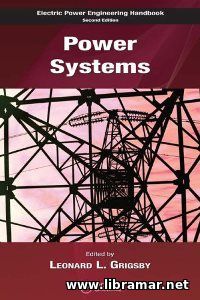 Nowadays, the process of generating the electric power and energy, its delivery to the consumer and utilization are considered very exciting and challenging field of electrical engineering. Most of the technological developments of today depend upon a reliable, efficient and, of course, safe supply of electric energy.
One of the declared objectives of this title was to provide all interested readers with a fresh, i.e. contemporary overview of the above mentioned matters and to prepare a good guide that could be used not only for educational, but also for practical purposes. The chapters of this publication have been written bearing electric power engineering professionals in mind; however, the info included in the book will be interesting and useful to the professionals from any other engineering disciplines. This volume has been divided by the author into four parts covering analysis and simulation of the power systems, their reliability/planning, power system transients and, finally, power electronics.
The huge amount of useful technical information contained in this book and, particularly, the way the author has presented it make this book really valuable for professionals of today as well as for the students of electrical engineering and anyone who may have some grey areas of their knowledge of power systems.
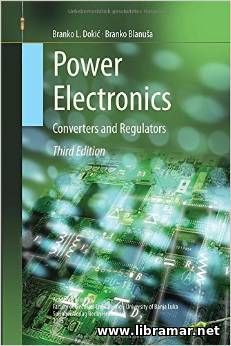 The book "Power Electronics" by Branko L. Dokic and Branko Blanusa contains ten chapters - and deals with the most significant items of power electronics. It has been very well organized with lot of examples, figures, and tables.
The first chapter is "Introduction." In this chapter basic elements, as well as some circuits and components used in power electronics are briefly presented. Chapter 2 covers basic semiconductor components, "Diodes and Transistors," and particularly covers their use as switches in power electronics circuits. Chapter 3 is focused on "Regenerative Switches." The description is wide and detailed and this chapter may be of interest not only for students, but also for professionals who use these components in practice.
Chapter 4 is "PWM DC/DC Converters." The converters are classified. All basic topologies of these converters are analyzed in detail in both continuous current mode (CCM) and discontinuous current mode (DCM). "Control Modules" are presented in Chap. 5. This chapter contains a number of control circuits used in power electronics. This chapter may be of interest not only for professionals in the field of power electronics, but also in related fields such as automotive control, pulse electronics, etc. Chapter 6 covers "DC/AC Converters-Inverters". This chapter is comprehensive, covering all important converter topologies and control techniques, e.g. selective harmonic elimination, uni- and bipolar PWM technique, and space vector modulation.
The next chapter is AC/DC converters, i.e., rectifiers. This chapter contains all basic topologies from uncontrolled half bridge and full bridge rectifiers to controlled thyristor and transistor ones. Also, some commonly used control techniques arc presented. PWM rectifiers and their applications are also discussed...
« 1 2 ... 8 9 10 11 12 ... 14 15 » |







